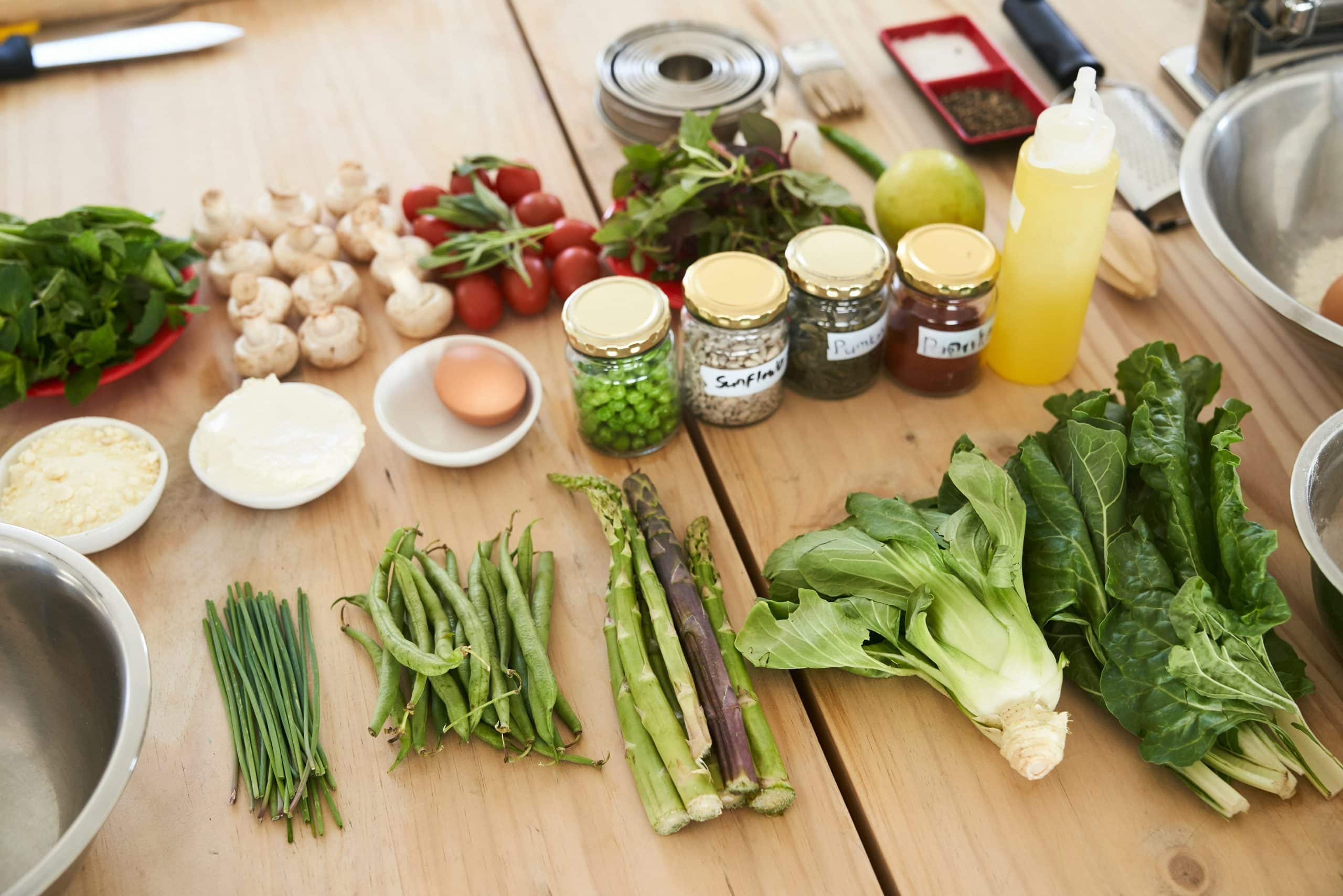The world of vegetarian cooking is a vibrant, ever-evolving landscape full of exciting flavors, textures, and techniques. It is a cuisine that celebrates vegetables and their myriad potential. Whether you are a seasoned vegetarian or a curious omnivore looking to integrate more plant-based meals into your diet, you’ve come to the right place. This article will introduce you to this world and provide you with a handful of easy, delicious recipes to get you started.
A Quick Introduction to Vegetarian Cooking
Whether for health reasons, environmental concerns, or moral beliefs, more and more people are choosing to adopt a vegetarian diet. As a result, vegetarian cuisine has diversified and evolved, transforming from an esoteric niche to a mainstream culinary movement.
A lire en complément : The secrets of barbecue cooking
Vegetarian cooking revolves around fresh whole foods and plant-based ingredients. The key to great vegetarian dishes lies in using seasonal vegetables, high-quality grains, and diverse sources of protein such as legumes, tofu, and cheese. These ingredients, when prepared with care and creativity, can yield meals that are satisfying, nutritious, and incredibly delicious.
Essential Vegetarian Recipes
The following recipes are staples in any vegetarian kitchen. They are simple, versatile, and packed with flavor, perfect for both weekday meals and special occasions.
A lire en complément : Basic techniques to master baking
Vegetable Pasta with Roasted Tomato Sauce
Nothing beats the simplicity and comfort of a bowl of pasta. This recipe elevates the classic by adding a rich, roasted tomato sauce and a heap of fresh vegetables. All you need is:
- Pasta of your choice
- Fresh tomatoes
- Garlic
- Olive oil
- Mixed vegetables
- Salt and pepper
First, you’ll roast the tomatoes and garlic in a drizzle of olive oil until they’re tender and caramelized. Then, puree them into a smooth sauce and toss with cooked pasta and sautéed vegetables. It’s a wholesome, satisfying meal that’s ready in no time.
Sweet and Savory Butternut Squash Soup
Soup is a staple in vegetarian cooking, and this sweet and savory butternut squash version is a must-try. The creamy texture and sweet flavor of the squash blend perfectly with savory herbs and spices, creating a hearty and comforting dish. Here’s what you’ll need:
- Butternut squash
- Onions
- Vegetable broth
- Fresh herbs (such as sage and thyme)
- Salt and pepper
Start by roasting the squash to bring out its natural sweetness. Then, sauté the onions, add the squash, herbs, and broth, and let it all simmer until it’s beautifully melded together. Blend until smooth and serve with a sprinkle of fresh herbs on top.
Creating a Balanced Vegetarian Meal
Creating a balanced vegetarian meal is about incorporating a variety of food groups to ensure you’re getting all the essential nutrients. Here’s a simple guideline to follow:
- Vegetables: Fill half your plate with a variety of colorful, seasonal vegetables. They can be raw, cooked, roasted, or grilled.
- Protein: Include a good source of protein such as beans, lentils, tofu, tempeh, seitan, or cheese. Protein is vital for muscle growth and repair.
- Grains: Add a serving of whole grains like brown rice, quinoa, barley, or whole grain pasta. These provide long-lasting energy and are rich in fiber.
- Healthy Fats: Don’t forget a source of healthy fats, such as olive oil, avocado, or nuts and seeds. These help absorb vitamins and keep you satiated.
Cooking Tips for Vegetarian Recipes
Here are a few tips to help you get the best results from your vegetarian recipes:
- Season well: Vegetables have a natural sweetness that can be enhanced by proper seasoning. Don’t skimp on salt, pepper, and herbs.
- Use quality ingredients: Since vegetables are the star of the show in vegetarian cooking, using fresh, high-quality ingredients can make a significant difference in taste.
- Experiment with different cooking methods: Try roasting, grilling, steaming, or sautéing your vegetables to bring out different flavors and textures.
- Add umami: Ingredients like soy sauce, miso, and mushrooms can add a rich, savory flavor to vegetarian dishes, making them feel more satisfying.
Make the Most of Leftovers
One of the best things about vegetarian cooking is how versatile it is. Leftover roasted vegetables can be turned into a delicious salad, added to pasta, or blended into a soup. Leftover grains can be used in stir-fries or salads. Leftover tofu or tempeh can be tossed into a curry or stir-fry.
By getting creative with your leftovers, you cut down on food waste and save time on meal prep. Plus, it’s a fun challenge to come up with new combinations and flavors based on what you have in your fridge.
Remember, becoming proficient in vegetarian cooking doesn’t happen overnight. It’s a journey of discovery, experimentation, and most importantly, enjoyment. So don’t be afraid to try new ingredients, recipes, and techniques. Happy cooking!
Exploring More Easy Vegetarian Recipes
The beauty of vegetarian cooking is its versatility. There are hundreds of different recipes to try, each one bringing a new flavor profile and texture to your plate. From sweet potato dishes to instant pot meals, the possibilities are almost endless.
One popular and easy vegetarian dish is a sweet potato and black bean chili. This hearty, plant-based meal provides a lovely balance of sweet and savory flavors. To make it, you’ll need sweet potatoes, black beans, onions, garlic, chili powder, cumin, and vegetable stock. Simply sauté the onions and garlic, add the sweet potatoes and spices, then add the black beans and stock. Let it simmer until the sweet potatoes are tender, and serve with a dollop of sour cream or yogurt.
Another recipe to try is a vegetarian mac and cheese. This comfort food classic can be made healthier and more nutrient-dense by adding vegetables like butternut squash or Brussels sprouts. Plus, there are plenty of vegan and gluten-free versions of mac and cheese that use ingredients like nutritional yeast and gluten-free pasta, making this dish accessible for those with dietary restrictions.
For a quick and easy lunch, try making a chickpea salad. Packed with protein and fiber, chickpeas are a great base for a filling salad. Toss them with fresh vegetables, olive oil, and your choice of herbs for a refreshing, satisfying meal.
Ultimately, the key to success in vegetarian cooking is to start with easy vegetarian recipes and gradually expand your repertoire. Deborah Madison, a renowned vegetarian chef, once said, “I don’t believe you need to be a vegetarian or vegan to enjoy vegetarian cooking.” So don’t be afraid to try something new and enjoy the process.
Concluding Thoughts on Vegetarian Cooking
Vegetarian cooking is not just about eliminating meat from your diet. It’s also about exploring a wide array of flavors and textures that plant-based foods have to offer. It’s about getting creative in the kitchen, trying new ingredients, and discovering new favorite dishes.
While vegetarian cooking might feel unfamiliar at first, it doesn’t have to be daunting. Start with easy vegetarian recipes like a grilled cheese sandwich or a peanut butter and jelly sandwich. Then, gradually try more complex recipes like a butternut squash risotto or a sweet potato and black bean chili.
Remember, a vegetarian diet can be as varied and exciting as any other. With a little creativity and an open mind, you can create delicious, satisfying meals that are good for you and good for the planet.
In conclusion, whether you’re a long-time vegetarian, a curious omnivore, or somewhere in between, vegetarian cooking has something to offer everyone. It’s a cuisine that is kind to our bodies, kind to animals, and kind to our planet. So why not give it a try? You might just find your new favorite dish. Happy vegetarian cooking!




































